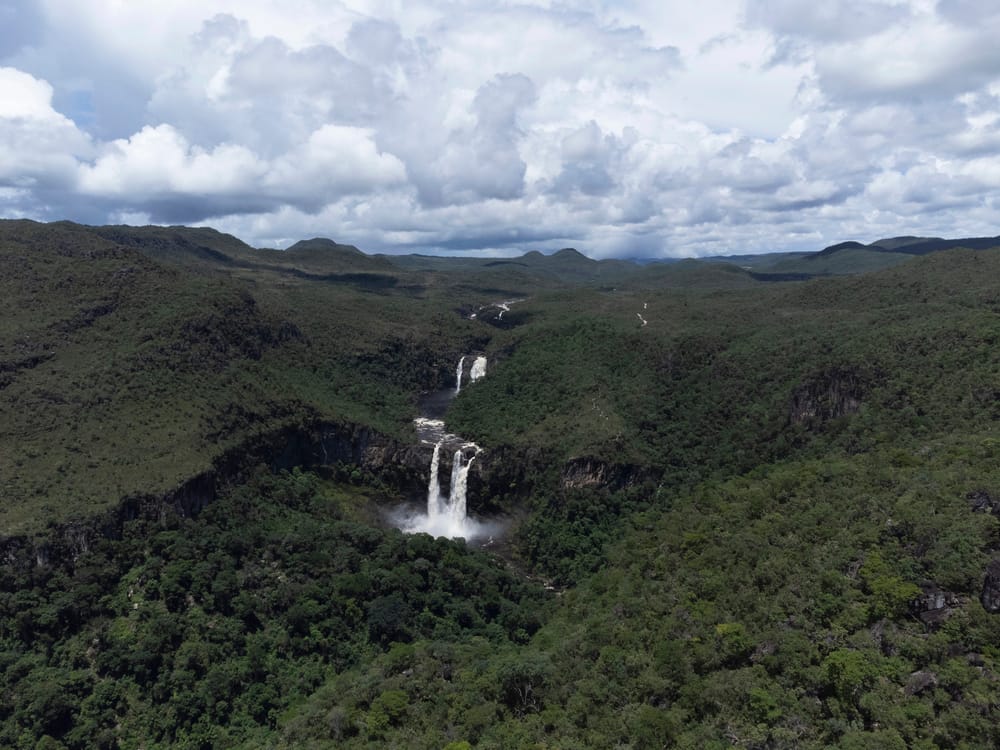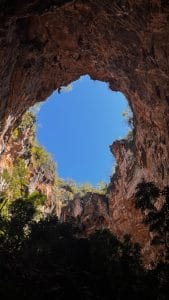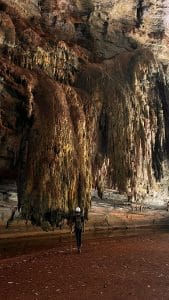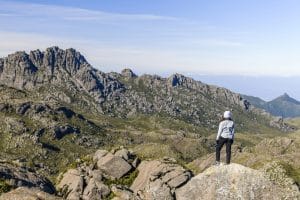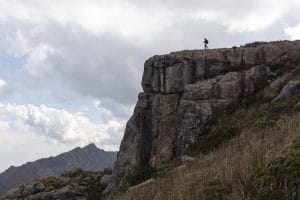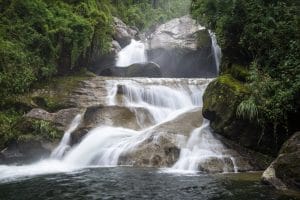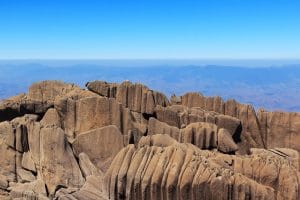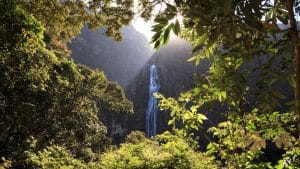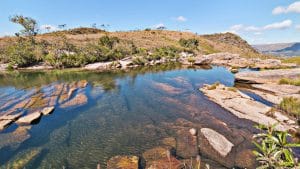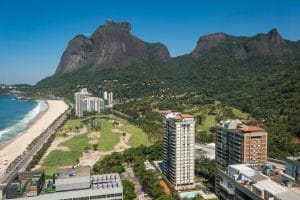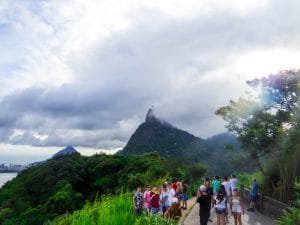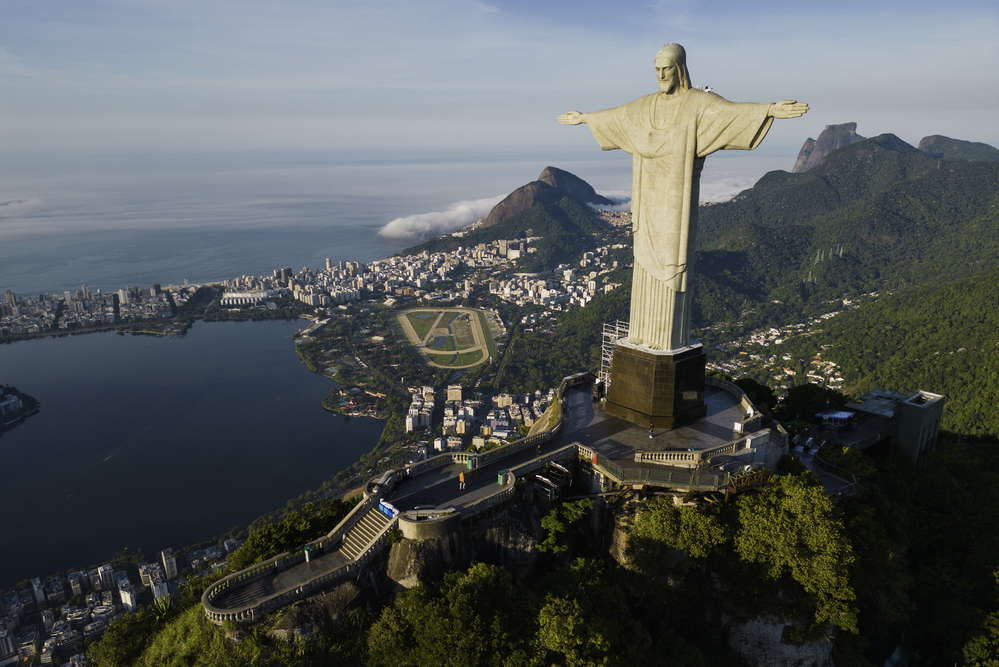Brazil is a true natural treasure and is home to dozens of national parks that preserve breathtaking landscapes. From north to south, these parks protect forests, waterfalls, mountains, beaches, and a rich biodiversity. Visiting a national park is a unique opportunity for those seeking adventure, contact with nature, and moments of peace away from the hustle and bustle of cities.
Moreover, many of these places offer trails, viewpoints, river baths, and even ecotourism activities, always focusing on environmental conservation. It is a chance to learn more about the country’s natural wealth, the beginning of the world’s creation with the indigenous peoples, and still have incredible experiences.
In this article, I will introduce you to some of the most beautiful and famous national parks in Brazil, ideal for including in your next travel itinerary. Get ready to discover surprising landscapes and be enchanted by Brazilian nature in its purest state.
National Park
Brazil’s national parks are natural areas protected by the government with the aim of conserving the country’s biodiversity and ecosystems. This means that they are places where nature is preserved almost in its original state, with little human interference.
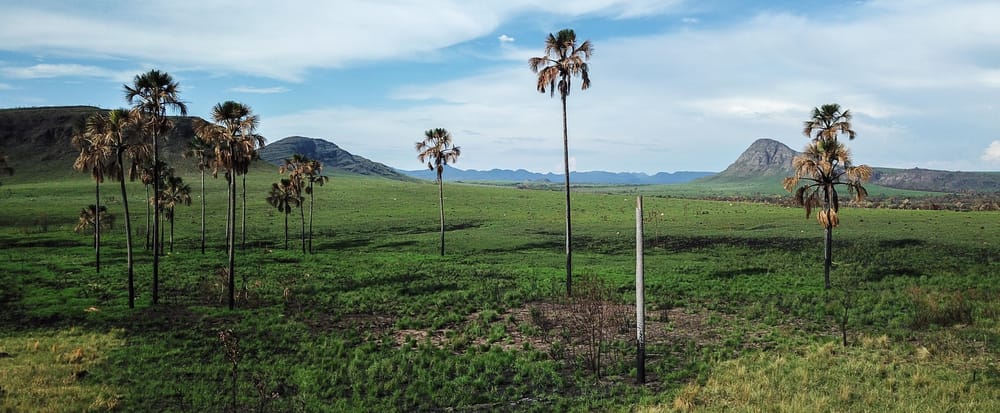
Created by law and managed by ICMBio (Chico Mendes Institute for Biodiversity Conservation), these parks have the mission to protect fauna, flora, water, soil, and natural environments as a whole. But that’s not all: they are also open to the public and offer incredible experiences for those who love to travel, explore trails, dive into waterfalls, or simply breathe fresh air.
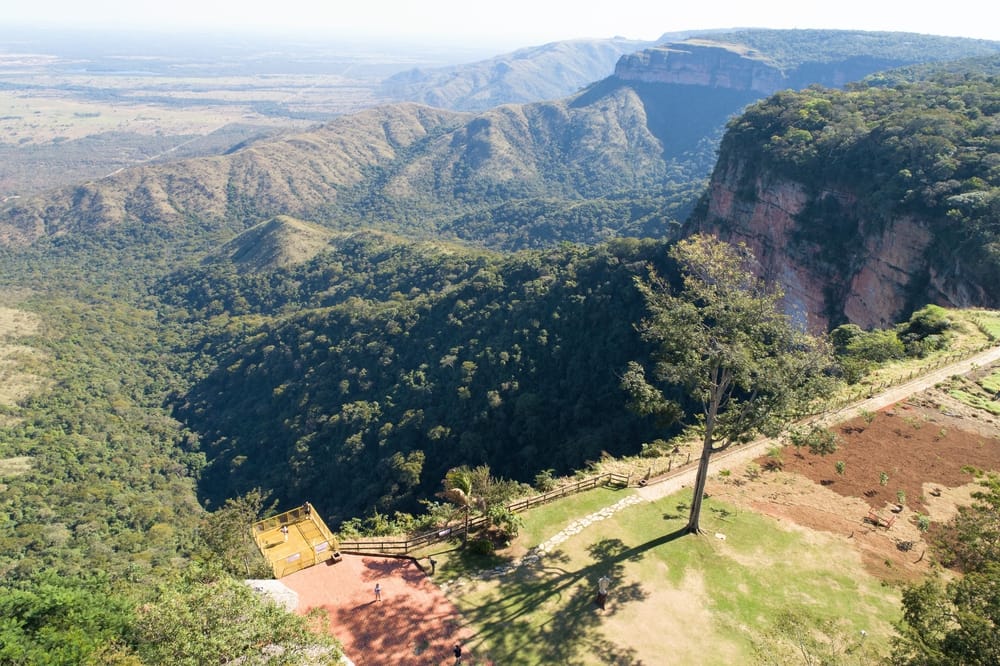
Traveling to a national park is much more than just tourism — it’s an opportunity to reconnect with nature, discover unique landscapes, and learn more about Brazil’s environmental wealth. There are tropical forests, open fields, mountains, caves, rivers, beaches, and even cerrado and caatinga areas, all in one country. Besides their beauty, the parks help maintain environmental balance and generate jobs and income for local communities through ecotourism.
Currently, Brazil has more than 70 national parks spread across all regions. Places like Chapada dos Veadeiros (GO), Iguaçu National Park (PR), and Tijuca National Forest (RJ) are just a few famous examples that attract visitors from all over the world.
If you are planning your next trip and want a destination full of nature, adventure, and tranquility, visiting a national park can be a great choice. Stay with me, and I will show you the most beautiful and famous national parks in Brazil and why these spaces are true natural treasures of the country.
Most Beautiful and Famous Parks
It’s only fair to start this ranking with my state, Minas Gerais. Besides being the fourth largest state in Brazil in terms of territory, its vegetation is predominantly cerrado. Minas has some national parks, but today I will introduce the Cavernas do Peruaçu, Grande Sertão Veredas, Itatiaia, and Serra da Canastra.
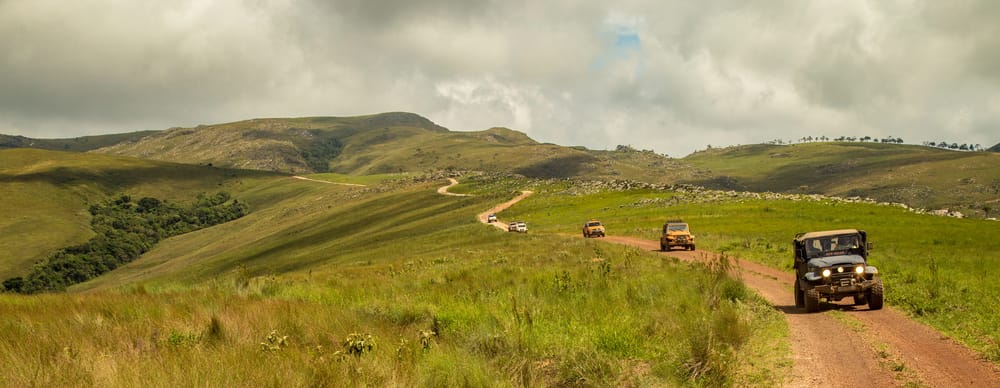
Cavernas do Peruaçu National Park
Cavernas do Peruaçu National Park is a true hidden treasure in the north of Minas Gerais, encompassing the municipalities of Januária, Itacarambi, and São João das Missões. Created in 1999, the park protects an area of over 56,000 hectares, filled with caves, archaeological sites, and lush nature.

The central area of the park consists of giant rocks, and inside them are caves that have been shaped by nature. When our eyes meet the caves, it becomes evident that humans are very, very small compared to nature.

The main highlight of the park is the Gruta do Janelão, a monumental cave with halls that reach almost 100 meters in height. Inside, you will find the largest stalactite ever recorded in the world, an impressive 28 meters long. The Peruaçu River runs through the cave, creating breathtaking landscapes.
In addition to the Gruta do Janelão, the park is home to more than 140 caves and over 80 archaeological sites, with rock paintings dating back up to 9,000 years. Places like Lapa dos Desenhos, Lapa do Boquete, and Lapa do Rezar offer accessible trails and an immersion into the prehistoric history of the region.
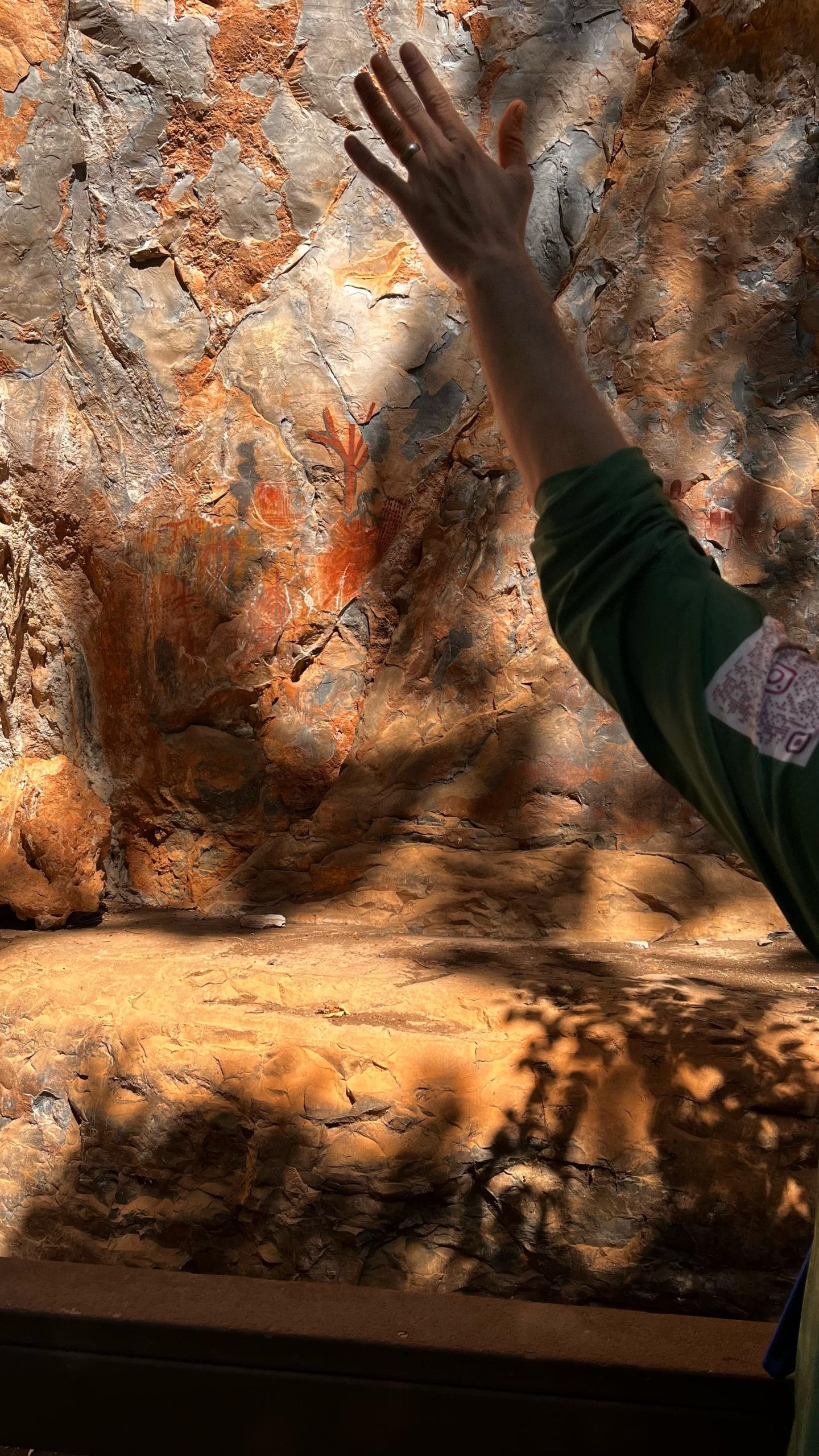
To visit the park, prior scheduling and accompaniment by guides accredited by ICMBio are required. Visits take place from Tuesday to Sunday, from 8 am to 6 pm, with entry to the attractions allowed until 2 pm.
In April of this year, I personally visited the Peruaçu Caves National Park and I can affirm that there is no beauty like it. The euphoria I felt inside left me speechless to describe this sensation throughout the journey as we climbed the stairs and explored the caves.
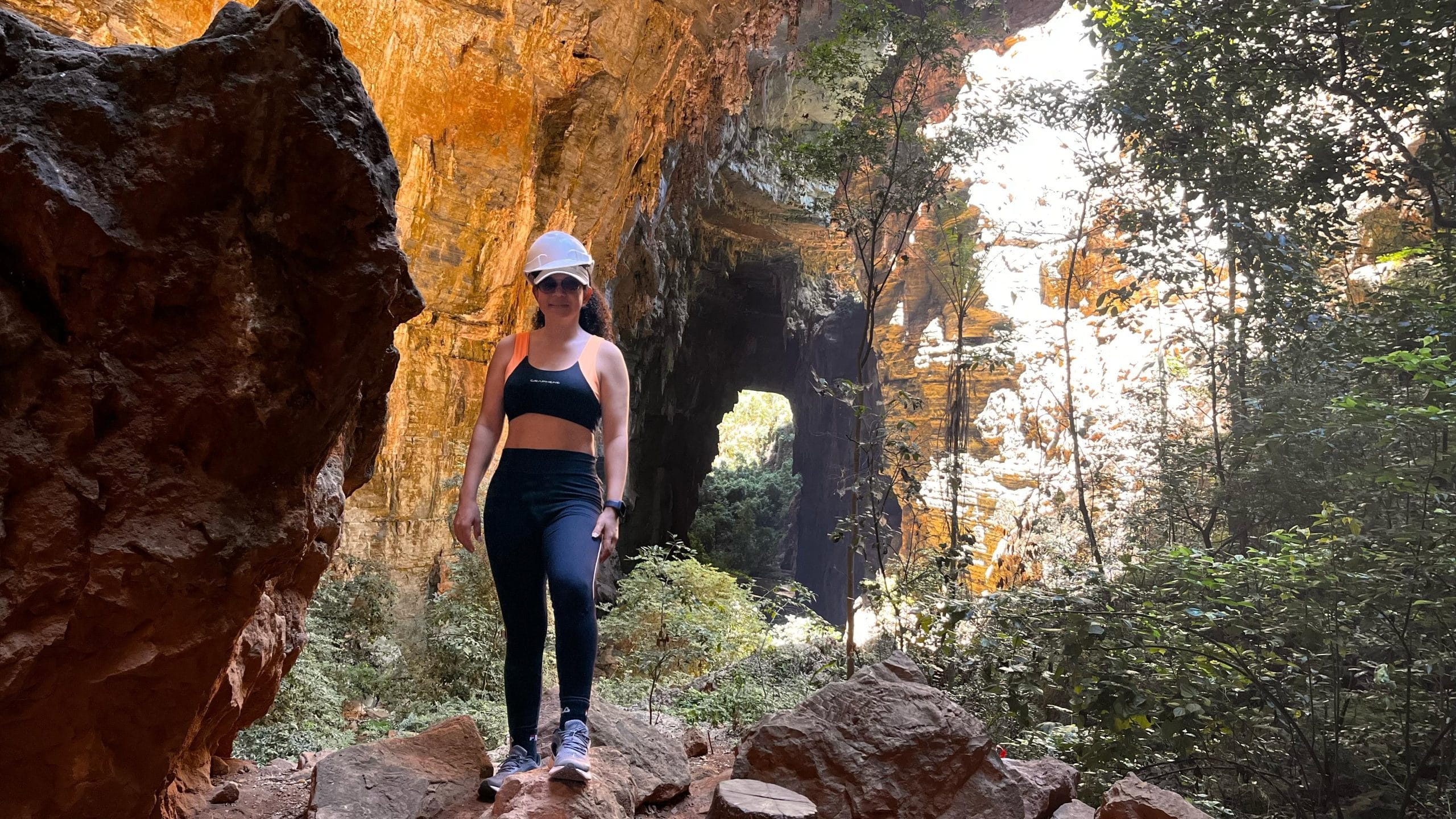
And, because of this inexplicable feeling that came from within me, I decided to write a (detailed article about the Peruaçu Caves Park), so that you can be as dazzled by the grandeur of nature, the culture, and the history of the Brazilian backlands, be enchanted by impressive landscapes, and connect with the oldest roots of Brazil.
Grande Sertão Veredas National Park
The Grande Sertão Veredas National Park is a true natural and cultural treasure located in the northern region of Minas Gerais, extending into Bahia. Established in 1989 and expanded in 2004, the park covers over 230,000 hectares of preserved cerrado (Brazilian savanna), with its headquarters in the municipality of Chapada Gaúcha.
The park’s name is a tribute to João Guimarães Rosa’s masterpiece Grande Sertão: Veredas, which vividly portrays the local landscapes and characters. The “veredas” are wetland areas filled with buriti palm trees, forming true oases in the cerrado and supporting a rich biodiversity.
The park’s fauna is diverse, including endangered species such as the maned wolf, the giant anteater, the jaguar, and the giant armadillo. The vegetation is dominated by the cerrado biome, with trees like the yellow ipe, aroeira, and pequi, offering a stunning display of colors and aromas.
To visit the park, prior booking is required, along with the accompaniment of guides accredited by ICMBio. Visits are allowed every day from 7 a.m. to 6 p.m., and must be completed by 6 p.m., with the guide responsible for returning the gate keys.
Most of the route is done by car, with stops at the main attractions. The visiting spots provide access to the Preto and Carinhanha Rivers (the border between the states of Minas Gerais and Bahia). Along the way, there are waterfalls, viewpoints, hills, and more.
The Grande Sertão Veredas National Park is an ideal destination for those seeking a deep connection with nature, culture, and the history of the Brazilian backlands. Get ready to be enchanted by breathtaking landscapes and to connect with the oldest roots of Brazil.
Itatiaia National Park
Itatiaia National Park is a natural gem located in the Serra da Mantiqueira, between the states of Rio de Janeiro and Minas Gerais. Created on June 14, 1937, it was the first national park in Brazil, established by President Getúlio Vargas. With an area of approximately 28 thousand hectares, the park is home to rich biodiversity and stunning landscapes.
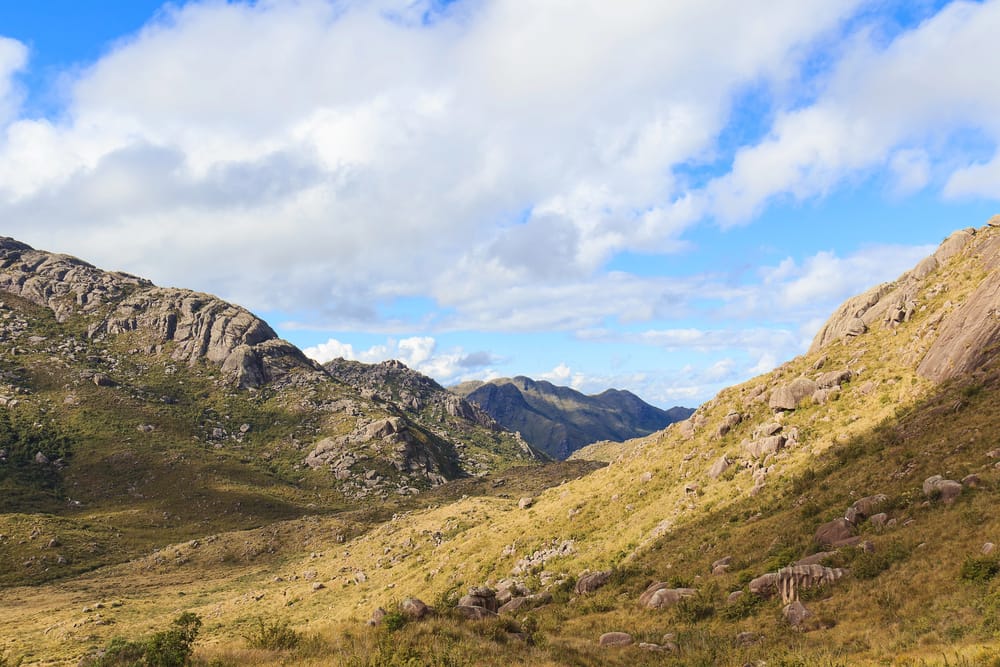
The park is divided into two main areas: the lower part and the upper part. In the lower part, accessible through the city of Itatiaia (RJ), visitors can explore trails through the Atlantic Forest, waterfalls such as Véu de Noiva and Lago Azul, as well as visitor centers with information about the local fauna and flora. The upper part, accessed through Itamonte (MG), is famous for its towering mountains, such as Pico das Agulhas Negras, standing at 2,791 meters high, and Pico das Prateleiras, both ideal for hiking and climbing.
The park is home to a wide variety of species, including the black capuchin monkey, the maned wolf, and numerous bird species. The vegetation varies according to altitude, ranging from dense Atlantic Forest to high-altitude grassland formations.
To visit Itatiaia National Park, tickets are required and can be purchased online or at the entrance. The park is open daily, with specific entry and exit times that vary between the lower and upper sections. It is advisable to check the weather conditions and be prepared for sudden changes, especially in the upper part, where the climate can be harsher.
Serra da Canastra National Park
Serra da Canastra National Park is one of the most impressive destinations in Minas Gerais, located in the southwest of the state. Created in 1972, the park covers about 197 thousand hectares and protects the headwaters of the São Francisco River, as well as the rich biodiversity of the Cerrado biome.
The main attraction is the Casca d’Anta Waterfall, the first major drop of the “Velho Chico,” standing at an impressive 186 meters tall. It can be visited from above, at the top of the mountain range, or from below, in the valley, offering breathtaking scenery.
The park is a paradise for nature lovers. It’s possible to spot animals such as the maned wolf, the giant anteater, the giant armadillo, and the Brazilian merganser, all of which are endangered species. The vegetation is typical of the Cerrado, with rocky fields, veredas (wetland areas), and riparian forests.
To visit, prior booking through ICMBio’s system is required. The park has several entrances, with the main one located in São Roque de Minas. The roads are unpaved, so using 4×4 vehicles is recommended, especially during the rainy season.

In addition to its natural beauty, the region is famous for Canastra cheese, which is internationally recognized. Visiting the park is a unique opportunity to connect with nature, enjoy incredible landscapes, and experience the culture of Minas Gerais up close.
Parque Nacional da Amazônia
The Amazon National Park is one of the largest protected areas in Brazil, located in the state of Pará, in the Itaituba region. Created in 1974, it was the first national park in the Amazon region and protects a significant portion of the largest tropical rainforest in the world.
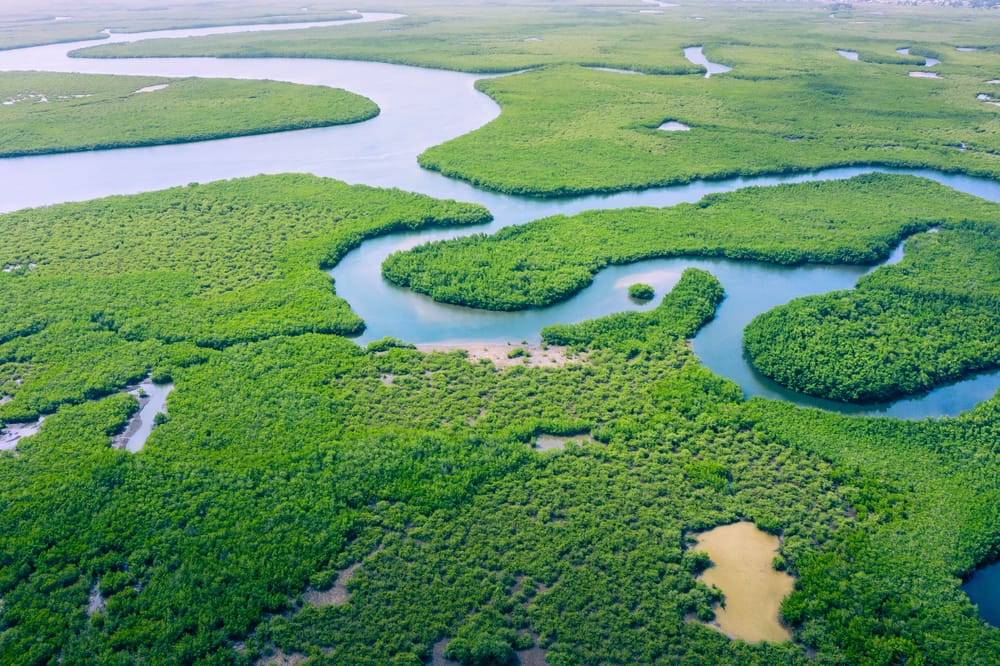
With around 1 million hectares, the park is home to a huge variety of animals, such as jaguars, tapirs, monkeys, macaws, toucans, and fish. The vegetation consists of a dense, humid forest, with giant trees and an impressive biodiversity. It is a place where nature is virtually untouched.

The Tapajós River cuts through the park, forming landscapes of rare beauty, with light-sand beaches, clear waters, and trails through the forest. There are also waterfalls, rapids, and perfect spots for those who enjoy adventure and ecotourism.
Access to the park is mainly by boat, departing from the city of Itaituba. To visit, authorization from ICMBio is required and, preferably, the accompaniment of specialized guides. Tourism is still little explored, which ensures an authentic experience for those seeking direct contact with nature.

The Amazon National Park is ideal for those who want to experience up close the grandeur of the Amazon rainforest and understand its importance for the planet’s environmental balance. It is a place that impresses with its beauty, silence, and the power of nature.
Tijuca National Park
Tijuca National Park is a true green refuge in the heart of Rio de Janeiro, considered one of the largest urban forests in the world. Covering approximately 3,972 hectares, the park encompasses mountainous areas of the Tijuca Massif and is divided into four sectors: Tijuca Forest, Serra da Carioca, Pedra Bonita/Pedra da Gávea, and Pretos Forros/Covanca.
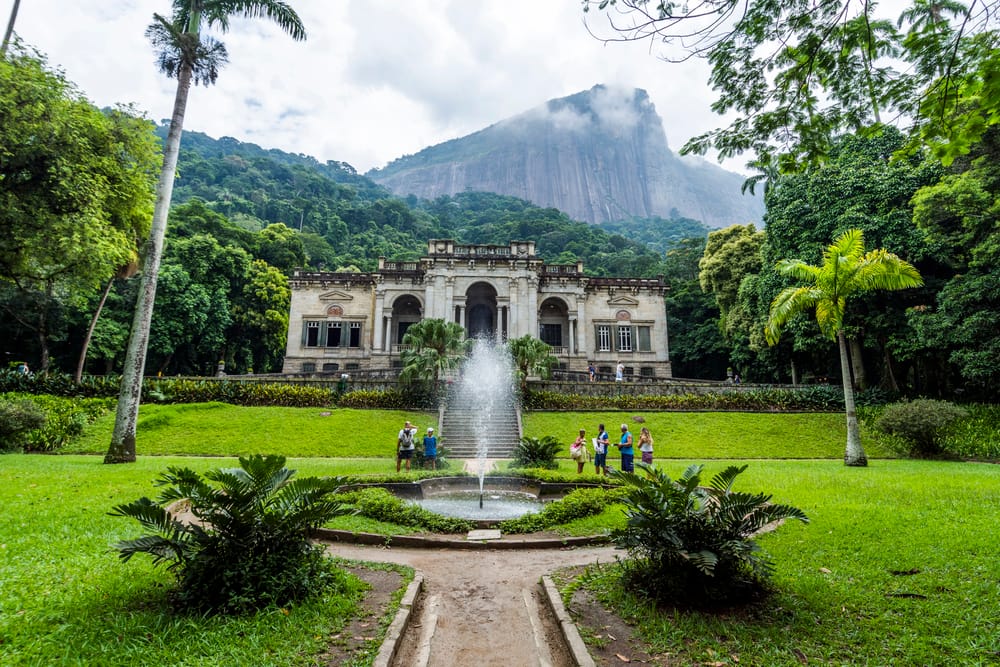
The history of the park dates back to the 19th century when deforestation for coffee plantations compromised the city’s water supply. In response, Emperor Dom Pedro II ordered the reforestation of the area in 1861, which was carried out by six enslaved workers under the supervision of Major Manuel Gomes Archer. More than 100,000 seedlings were planted, mainly of native species of the Atlantic Forest, resulting in the forest we know today.
Among the main attractions of the park are the Christ the Redeemer statue on Corcovado Mountain, the Chinese View, Pedra da Gávea, Pico da Tijuca (the highest point in the park, with an altitude of 1,022 meters), as well as various trails, waterfalls, and viewpoints that offer stunning views of the city.
The fauna is rich and diverse, including species such as capuchin monkeys, coatis, marmosets, hummingbirds, and thrushes. The vegetation is composed of a mix of native and exotic species, a result of the reforestation process initiated in the 19th century.
Tijuca National Park is managed by the Chico Mendes Institute for Biodiversity Conservation (ICMBio) and is open to visitors. For more information on hours, trails, and visitor guidelines, please visit the ICMBio website.
Brasília National Park
Brasília National Park, also known as Água Mineral, is one of the most important green areas in the Federal District. Created in 1961, it protects a large part of the Cerrado, the second largest biome in Brazil, and covers about 42,000 hectares. It is very close to the center of the capital, making it a great destination for residents and tourists seeking contact with nature.
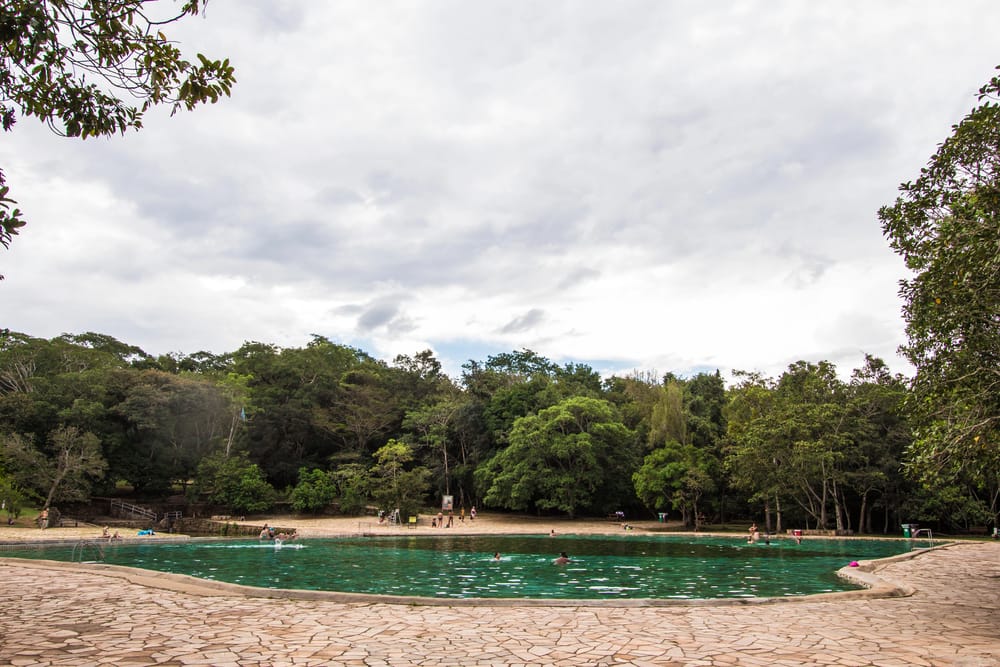
One of the park’s most well-known attractions is the mineral water pools, which come directly from natural springs. This is why the place is nicknamed “Água Mineral.” These pools are very popular on weekends, especially with families.
Additionally, the park has well-marked ecological trails, such as the Capivara Trail and the Cristal Água Trail, where visitors can walk and observe animals like maned wolves, capybaras, anteaters, toucans, and many other species of the Cerrado.
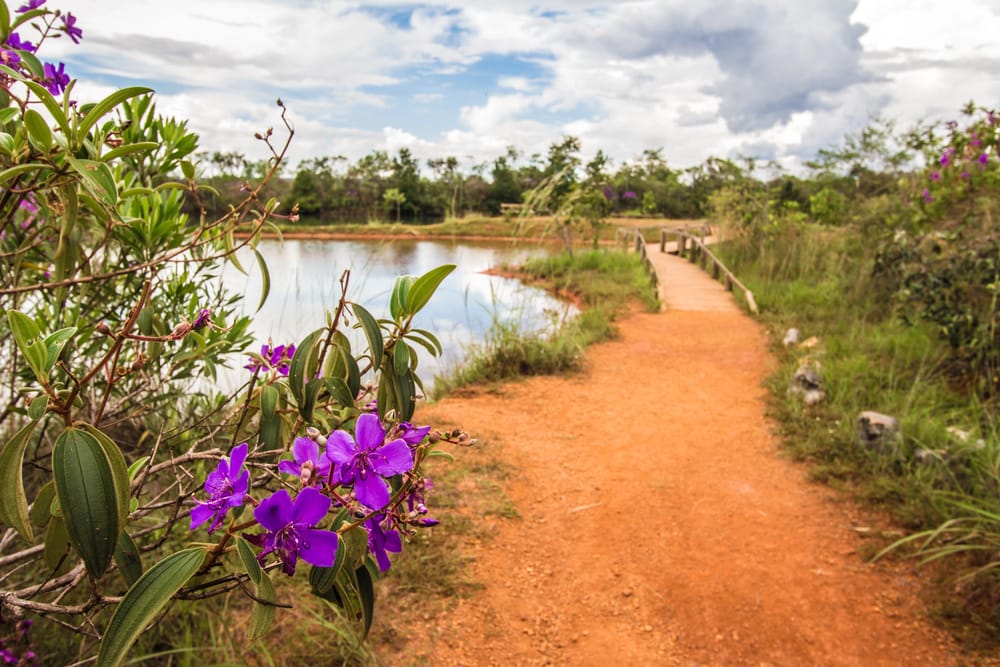
Brasília National Park also plays an important role in protecting the springs that supply the Federal District. It helps preserve water quality and maintain the environmental balance of the region. Therefore, it is considered essential both for leisure and nature conservation.
Entrance to the park is paid, but the fee is affordable. Visits can be made during the day, and the site has basic infrastructure such as restrooms, rest areas, and security. It is an excellent place for walking, swimming, picnicking, and relaxing in nature.
Brasília National Park is a natural refuge within the country’s capital. A space to breathe fresh air, learn about the Cerrado, and recharge your energy close to nature.
Iguaçu National Park
Iguaçu National Park is one of the most famous tourist destinations in Brazil and the world. It is located in the state of Paraná, on the border with Argentina, and was created in 1939 to protect the rich biodiversity of the region. With over 185,000 hectares, the park houses the largest reserve of Atlantic Forest in the south of the country.
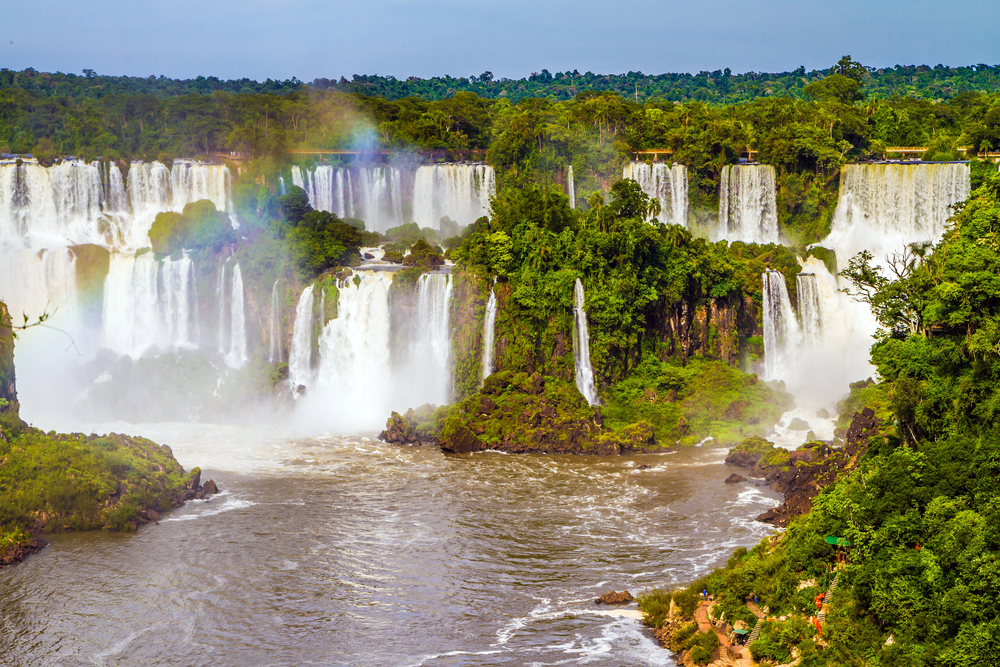
The main attraction of the park is the Iguaçu Falls, a set of more than 270 waterfalls that stretch for almost 3 km along the Iguaçu River. The largest of them, the Devil’s Throat, is 80 meters high and impresses any visitor with its power and beauty. The walkways built around the falls allow visitors to get very close to the water, feeling the energy of the waterfalls.
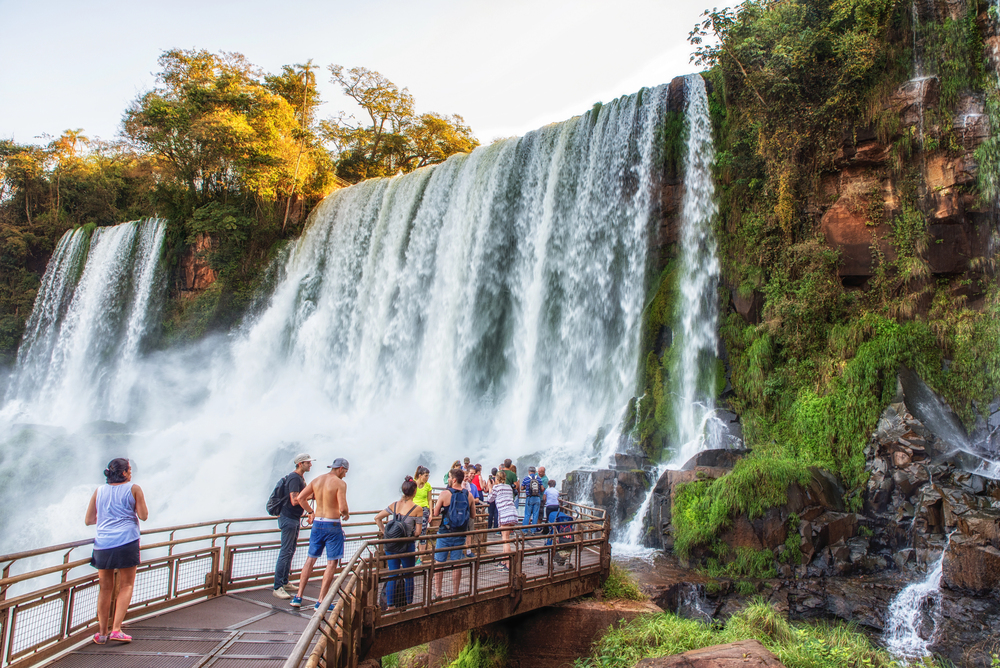
In addition to the waterfalls, the park is a true ecological sanctuary. It is home to various species of animals such as jaguars, anteaters, toucans, butterflies, and many others. The vegetation is typical of the Atlantic Forest, with tall trees, tropical plants, and a great diversity of species.
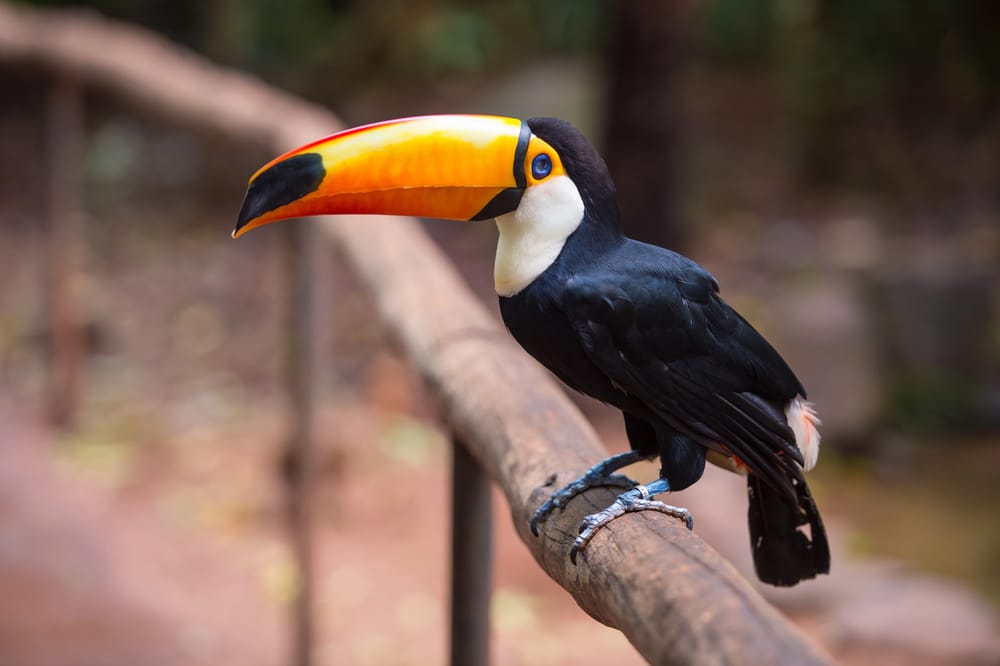
The park has good infrastructure for tourism. There is internal transportation, ecological trails, a visitor center, snack bars, and guides that help make the visit even more complete. It is also possible to take boat trips that get very close to the falls.
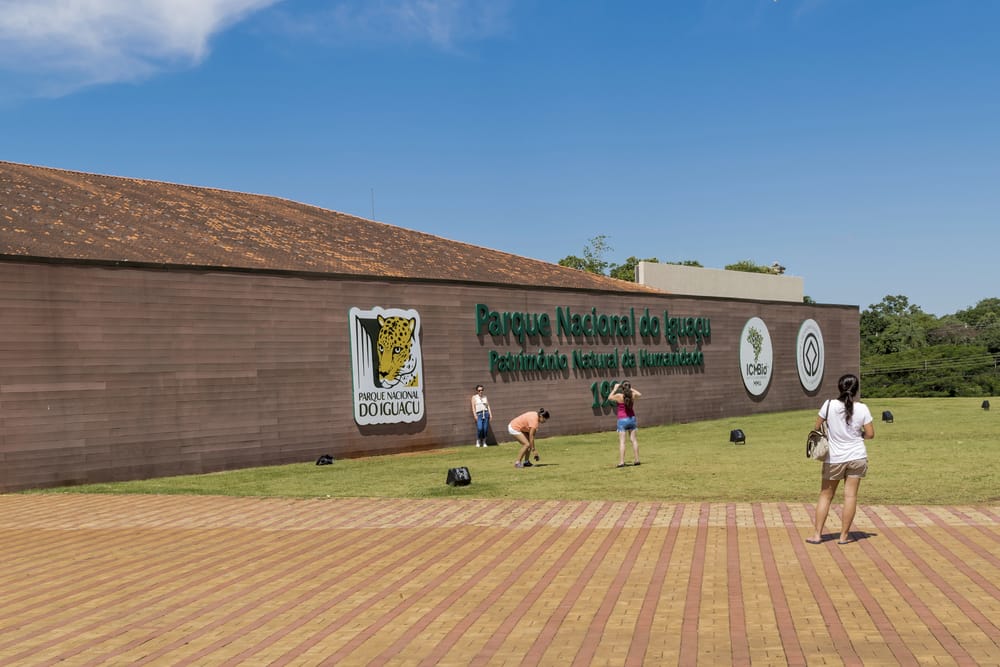
Due to its natural importance and unique beauty, Iguaçu National Park was recognized as a UNESCO World Heritage Site in 1986. Visiting this park is an unforgettable experience that combines adventure, nature, and respect for the environment. A true Brazilian treasure that deserves to be known by everyone.
Chapada dos Veadeiros National Park
The Chapada dos Veadeiros National Park is one of the most stunning places in Brazil, located in northeastern Goiás, about 230 km from Brasília. Established in 1961, the park protects an area of approximately 240,000 hectares of high-altitude Cerrado, featuring unique landscapes, ancient rock formations, and incredibly rich biodiversity.
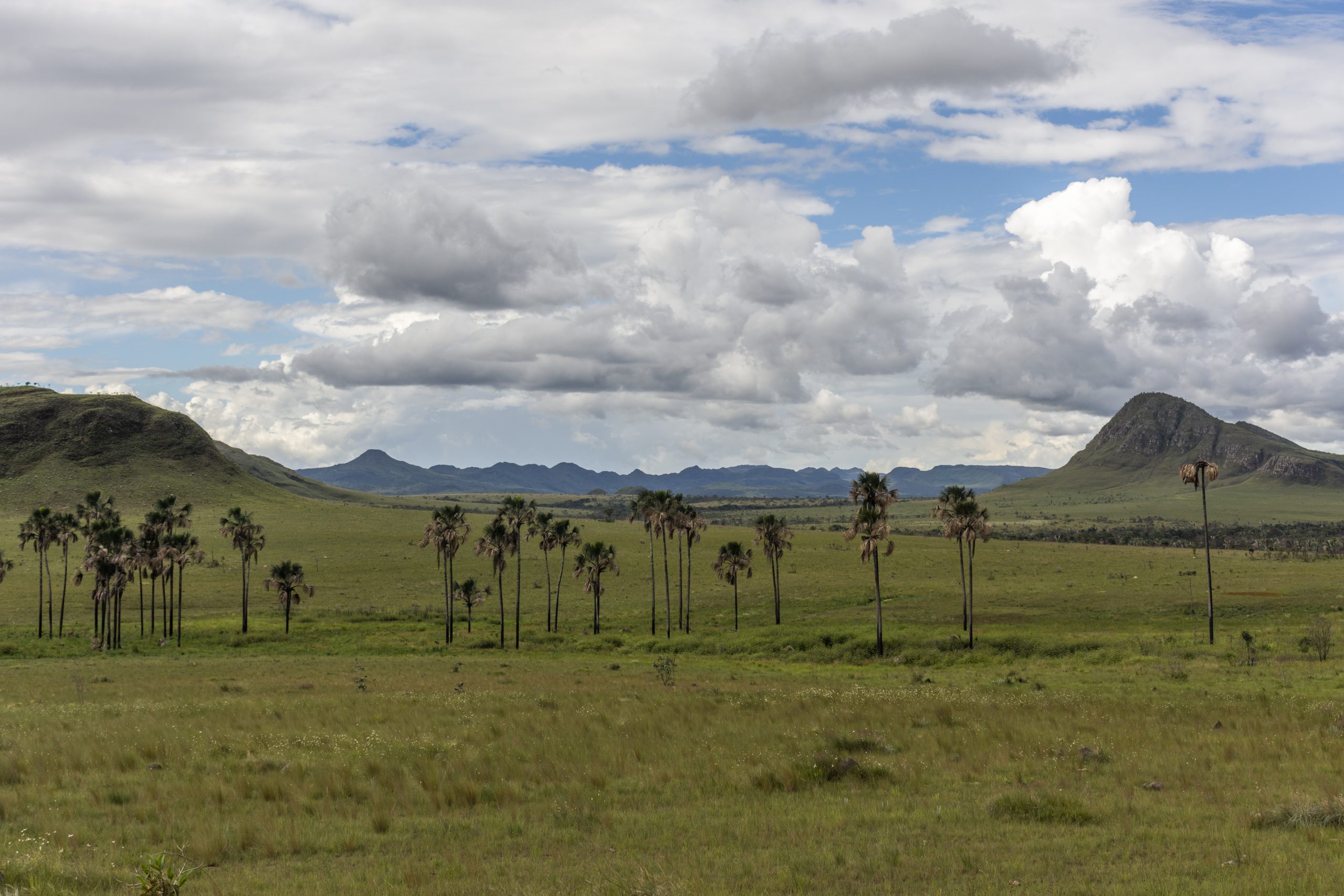
Recognized as a Natural World Heritage Site by UNESCO in 2001, the park is home to several endangered species, such as the maned wolf, the jaguar, and the Brazilian merganser. Additionally, it is one of the country’s main water recharge areas, with hundreds of springs that feed important river basins.
Among the natural attractions, highlights include the Saltos do Rio Preto, with waterfalls reaching up to 120 meters, the canyons, and the natural pools of Carioquinhas. Outside the park but still in the region, there are famous spots like the Vale da Lua, with rock formations sculpted by water, and the Santa Bárbara Waterfall, known for its crystal-clear waters.
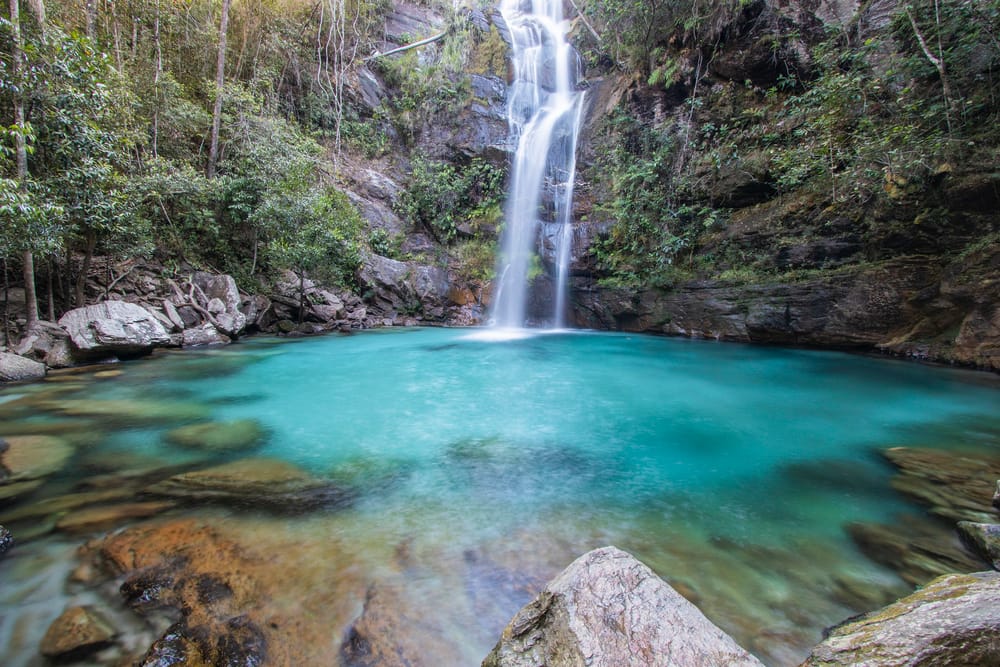
The main entrance to the park is located in the village of São Jorge, near the town of Alto Paraíso de Goiás. The area features well-marked trails and infrastructure to welcome visitors. The presence of quartz crystals and its location along the 14th Parallel, the same that passes through Machu Picchu, contribute to the mysticism that surrounds the region.
Lençóis Maranhenses National Park
The Lençóis Maranhenses National Park is one of the most breathtaking natural landscapes in Brazil, located in the state of Maranhão. Established in 1981, the park covers around 155,000 hectares of white sand dunes, crystal-clear lagoons, coastal scrublands, and mangroves. Despite its desert-like appearance, the region receives abundant rainfall between January and June, forming temporary lagoons between the dunes—such as Lagoa Azul and Lagoa Bonita—which are perfect for swimming and taking in the scenery.
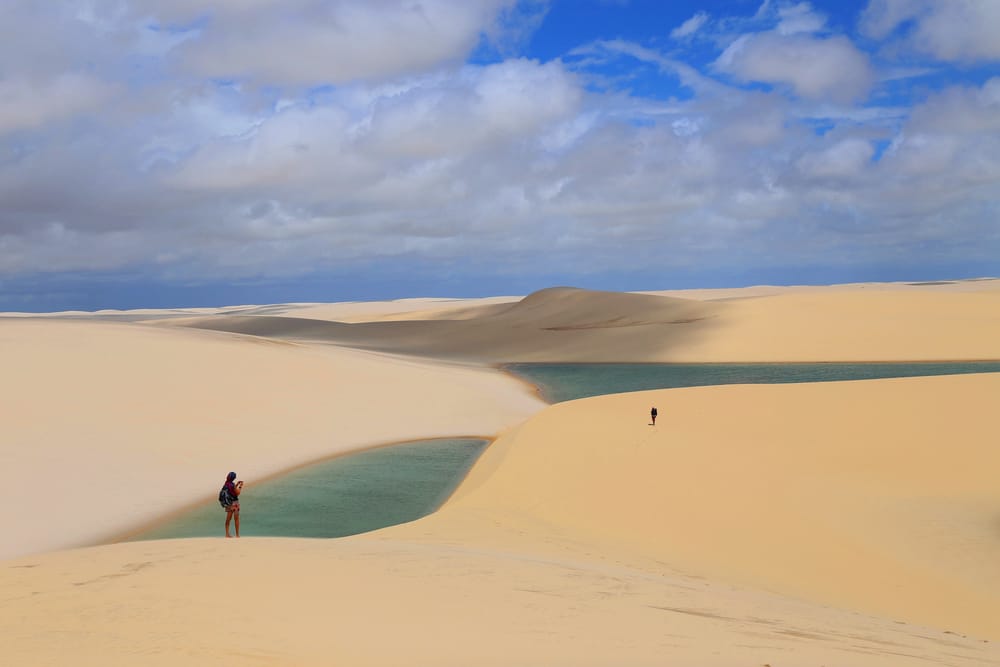
The Lençóis Maranhenses National Park is one of the most stunning natural landscapes in Brazil, located in the state of Maranhão. Created in 1981, the park spans about 155,000 hectares of white sand dunes, crystal-clear lagoons, coastal scrublands, and mangroves. Despite its desert-like appearance, the region receives abundant rainfall between January and June, forming temporary lagoons between the dunes—such as Lagoa Azul and Lagoa Bonita—that are perfect for swimming and relaxation.
The park lies in a transition zone between the Cerrado, Caatinga, and Amazon biomes, which contributes to its rich biodiversity. It is home to endangered species such as the lionfish, the neotropical otter, the jaguar, and the lionfish. In July 2024, the park was recognized as a UNESCO Natural World Heritage Site, highlighting its unique beauty and ecological importance.
The main access point to the park is through the city of Barreirinhas, but it is also possible to enter via Santo Amaro and Primeira Cruz. Tours are conducted in 4×4 vehicles, with options for guided hikes across the dunes and visits to the lagoons. During the dry season, from July to December, the lagoons begin to dry up, but the scenery remains breathtaking.
In addition to its natural beauty, the park has served as a filming location for movies and series such as Casa de Areia and Avengers: Infinity War, boosting its international fame. Visiting Lençóis Maranhenses is a one-of-a-kind experience, offering a deep connection with nature in a setting of rare beauty and tranquility.
Brazilian National Parks
In addition to the 10 most famous national parks in Brazil, I’m including a list of 64 other national parks so you can explore the full range of Brazil’s natural diversity and get a glimpse of what the world was like thousands of years ago.
- Restinga de Jurubatiba National Park
- Chapada dos Guimarães National Park
- Chapada das Mesas National Park
- Furna Feia National Park
- Lagoa dos Peixes National Park
- Serra da Bocaina National Park
- Serra da Bodoquena National Park
- Serra da Capivara National Park
- Serra da Cutia National Park
- Serra das Confusões National Park
- Serra das Lontras National Park
- Serra do Cipó National Park
- Serra do Divisor National Park
- Serra da Gandarela National Park
- Serra do Itajaí National Park
- Serra do Pardo National Park
- Serra do Teixeira National Park
- Serra dos Órgãos National Park
- Serra Geral National Park
- Araucárias National Park
- Emas National Park
- Nascentes do Rio Paranaíba National Park
- Sempre-Vivas National Park
- Anavilhanas National Park
- Boa Nova National Park
- Ilha Grande National Park
- Pacaás Novos National Park
- Saint-Hilaire/Lange National Park
- Sete Cidades National Park
- Ubajara National Park
- Descobrimento National Park
- Acari National Park
- Alto Cariri National Park
- Araguaia National Park
- Boqueirão da Onça National Park
- Cabo Orange National Park
- Caparaó National Park
- Catimbau National Park
- Jamanxim National Park
- Jaú National Park
- Juruena National Park
- Monte Pascoal National Park
- Mount Roraima National Park
- Pau Brasil National Park
- Pico da Neblina National Park
- Rio Novo National Park
- Superagüi National Park
- Viruá National Park
- Campos Amazônicos National Park
- Campos Gerais National Park
- Campos Ferruginosos National Park
- Guaricana National Park
- Mapinguari National Park
- Ilhas dos Currais Marine National Park
- Abrolhos Marine National Park
- Tumucumaque Mountains National Park
- Nascentes do Lago Jari National Park
- Serra da Mocidade National Park
- Serra de Itabaiana National Park
- Pantanal Matogrossense National Park
- Jericoacoara National Park
- Aparados da Serra National Park
- Fernando de Noronha Marine National Park
- Chapada Diamantina National Park
Conservation and Sustainability
National Parks play a crucial role in biodiversity conservation and ecosystem protection. Research projects and sustainability initiatives are carried out to ensure that the parks remain a refuge for wildlife and a destination for responsible ecotourism. Take advantage of this opportunity to learn how the world breathes in its entirety.
Tips for Visitors
Finally, for those planning to visit the parks, it’s important to be prepared for the adventure. It’s recommended to bring lightweight clothing, insect repellent, and enough water to stay hydrated. In all parks open to visitors, local guides are available to help explore the parks in a safe and informative way.
